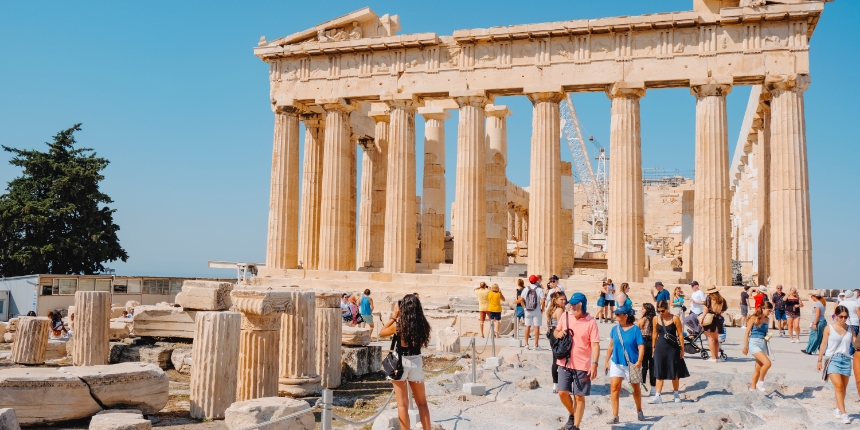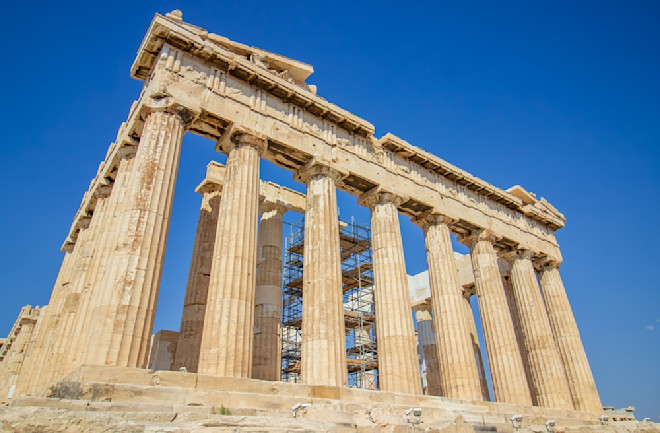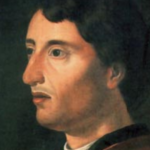Ictinus and Callicrates are two remarkable figures in the annals of ancient architecture, celebrated primarily for their monumental contributions to the Parthenon, a cultural and spiritual icon of ancient Athens. Their work not only epitomizes the artistic excellence of their era but also reflects the societal values and democratic principles that defined Athenian life. Through the lens of Ictinus and Callicrates, we can explore how architectural mastery intertwines with cultural identity, leaving an indelible mark on history.
The Architectural Genius of Ictinus and Callicrates

The legacy of Ictinus and Callicrates is intertwined with the creation of one of the most significant architectural masterpieces in human history—the Parthenon. This section delves into the intricacies of their design philosophy and construction techniques, showcasing how they redefined the standards of architecture and beauty.
The Vision Behind the Parthenon
The Parthenon was not merely designed as a temple dedicated to Athena; it was conceived as a celebration of Athenian democracy, culture, and pride.
The vision behind the Parthenon went beyond its structural integrity; it sought to embody the ideals of harmony and proportion so pivotal to classical architecture. Ictinus and Callicrates meticulously planned every aspect of the temple, from its dimensions to its intricate carvings, ensuring that each component contributed to an overarching sense of unity and beauty.
Furthermore, their understanding of human perception played a crucial role in the design process. They implemented subtle adjustments in proportions to counteract visual distortions that occurred with distance, creating an illusion of perfection. This level of detail demonstrates their commitment to not just architectural precision but also to the emotional impact of the space.
Materials and Techniques

Ictinus and Callicrates utilized local materials, specifically the finest white marble from nearby quarries, which added both aesthetic value and structural robustness to the Parthenon.
Their approach to material selection was deeply reflective of their understanding of the environment surrounding Athens. By choosing local resources, they harmonized the structure with its landscape, creating a seamless integration between nature and human ingenuity.
In terms of construction techniques, the duo employed advanced methods that were revolutionary for their time. The use of entasis—a slight curvature in columns—was a brilliant solution to create a dynamic visual effect that gave life to the structure. These innovative techniques showcased their command over the artistry of architecture and their willingness to push boundaries.
Symbolism and Cultural Significance

The Parthenon transcended its physical form; it became a symbol of Athenian independence, artistic expression, and the triumph of civilization.
It served as a canvas for sculptors and artists, reflecting a confluence of ideas and beliefs that shaped Athenian identity. The friezes and metopes depicted historical battles and mythological narratives, reinforcing the notion of divine favor and human valor.
As a communal space, the Parthenon facilitated gatherings, festivals, and ceremonies, cementing its role as a cornerstone of Athenian society. This multifaceted significance underscores Ictinus and Callicrates’s intention to create more than just a building—it was a beacon of cultural heritage.
The Influence of Ictinus and Callicrates on Future Generations

The contributions of Ictinus and Callicrates extend well beyond their lifetime. Their work has been a source of inspiration for countless architects and artists throughout history. This section examines how their design principles have influenced architectural paradigms and resonated through time.
A Template for Classical Architecture

The architectural principles established by Ictinus and Callicrates set the foundation for what would be known as classical architecture, influencing styles for centuries.
Their emphasis on symmetry, proportion, and harmony became the benchmark for subsequent civilizations. Many Roman structures, including the Pantheon and various temples, were heavily inspired by the designs of the Parthenon.
Even in contemporary architecture, references to the elegance and balance found in the works of Ictinus and Callicrates can be seen. Modern architects continue to draw upon these elements, proving the timeless relevance of their ideas.
Cultural Resilience and Adaptation
As societies evolve, the core tenets of Ictinus and Callicrates’s work demonstrate an enduring adaptability amidst changing cultural landscapes.
Through various interpretations, the philosophies encapsulated within the Parthenon have found new expressions. From neoclassical movements in the 18th and 19th centuries to modern reinterpretations, their influence persists.
This resilience highlights the universality of their vision: the belief that architecture can capture the spirit of a people while serving practical functions. It speaks to a legacy that not only embodies beauty but also adapts to the needs and aspirations of diverse cultures over time.
The Role of Education and Preservation
The education of emerging architects today often involves studying the works of Ictinus and Callicrates, emphasizing the need for a comprehensive understanding of historical contexts.
Preservation efforts around the Parthenon emphasize its importance as a cultural artifact, ensuring that the wisdom of Ictinus and Callicrates remains accessible to future generations. Educational programs and research initiatives focused on classical architecture offer insights into their methodologies, fostering appreciation and innovation in contemporary design.
By preserving the legacy of Ictinus and Callicrates, society ensures that the lessons learned from ancient practices inform the evolution of architecture and cultural identity.
Ictinus and Callicrates and the Essence of Athenian Society

To grasp the full impact of Ictinus and Callicrates, it is essential to contextualize their contributions within Athenian society during its golden age. This section explores the interplay between architecture, democracy, and cultural values in shaping the legacy of these great architects.
The Interconnection of Art and Politics
In ancient Athens, art and politics were inseparable, and the Parthenon emerged as a manifestation of this relationship.
Ictinus and Callicrates understood that the Parthenon should embody the democratic ideals of the city-state, serving not just as a religious site but also as a representation of collective identity. Their designs resonated with the Athenian ethos, reflecting the ambitions and aspirations of a society striving for greatness.
The very act of constructing the Parthenon was a political statement, a declaration of Athenian supremacy in the Greek world. As such, the work of Ictinus and Callicrates is not merely an architectural achievement; it was a powerful symbol of civic pride and unity.
Societal Reflections in Architectural Design
The Parthenon serves as a window into the complexities of Athenian society, revealing attitudes toward religion, governance, and community.
The choice of Athena as the central deity signifies the importance of wisdom and warfare in Athenian culture, while the architectural style reflects the desire for order and beauty in public spaces.
Moreover, the collaborative efforts of artisans, laborers, and citizens in the construction process illustrate a collective investment in the project. This sense of ownership and participation underpins the democratic spirit that Ictinus and Callicrates sought to embody in their work.
A Testament to Human Endeavor
Above all, the legacy of Ictinus and Callicrates underscores the potential of human endeavor to shape the world around us.
Their ability to merge creativity with technical expertise exemplifies the heights humanity can achieve when ambition and skill converge. In this way, the Parthenon stands as a testament to the enduring power of art and architecture to inspire and unite.
As we reflect on their impact, it becomes clear that Ictinus and Callicrates did not simply erect a building; they created an enduring narrative woven into the fabric of human history.
Conclusion

The contributions of Ictinus and Callicrates extend far beyond their architectural exploits. They encapsulate the spirit of an era marked by artistic brilliance, democratic ideals, and communal pride. Their masterpiece, the Parthenon, remains a symbol of cultural identity and a testament to the timelessness of good design.
As we traverse the corridors of history, the legacy of Ictinus and Callicrates serves as a reminder of the power of architecture to transcend time, inspire future generations, and evoke the emotions that connect us to our past. Their work encourages us to appreciate the profound relationship between our environments and our collective identities, urging us to look towards the future with reverence for the foundations laid by those who came before us.
✉️ Stay Connected — Subscribe for Weekly Updates
Discover timeless stories, practical wisdom, and beautiful culture — delivered straight to your inbox.
*We only share valuable insights — no spam, ever.






